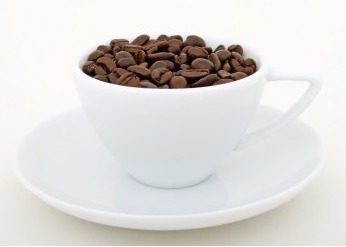Basic knowledge of Fine Coffee Coffee History of Arab East Africa

The word Mocha has many meanings. After 600 AD, the first coffee bean far from its hometown, Ethiopia, took root in the leaf gate on the other side of the Red Sea, and the coffee industry began all over the world. Since the most important export port of Yemen coffee in the early days was the port of Mocha (now silted up already), the coffee produced in Yemen was also called "mocha" beans. Over time, some people began to use "mocha" as a nickname for coffee, similar to the situation in Java today. Later, because the aftertaste of mocha coffee resembled chocolate, the word "mocha" was extended to be a mixture of hot chocolate and coffee. Therefore, the same is "mocha", mocha beans, mocha pot and Italian coffee in mocha coffee, but represent three meanings. Today's Yemen Mocha is no different from its ancestors more than a thousand years ago, and it is still the most advanced traditional hand-dried bean-although it varies in size and contains a lot of impurities in raw beans. The two most common producing areas are Mattari and Sanani; Matali beans have more texture, chocolate and sour taste, while Shanani beans are more balanced and fragrant. Generally speaking, the average size of mocha beans is small, with the wild and spicy smell of ginger, bright and unique taste, pleasant fruit acidity, and rich wine-like texture, no wonder it is known as the Bordeaux wine in coffee. In mixed coffee, mocha usually plays the role of high-pitched voice, responsible for stimulating and improving flavor.
[Ethiopia (Ethiopia)]
The highlands of Ethiopia are the birthplace of coffee. The traditional drying method is still used to produce mocha-Hara beans (Harrar,Harari,Harer or Harar) at an altitude of about 2,000 meters near Harrar in the east. Hara has a medium texture with a fruit wine-like flavor, and a good Hara is as wild as the best Yemenmoka. Dried beans from other regions, such as Kinby (Gimbi or Ghimbi), Gemma (Jima,Jimma or Djimah) and Sidamo, are equally wild as wine, but with less rich texture and slightly rough texture. The water-washed mocha from Jinbi in the west has the same sour wine as Hara, but it is packaged with a richer and balanced feel and a thicker texture. As for water-washed beans from the south, such as Sidamo and Gemma, they keep less sour wine and replace them with more gentle and delicate flavours of lemon and flowers. The best is produced in a high, narrow area of Sidamone, called Yirgacheffe, whose rich taste brushes the taste buds and leaves an endless aftertaste, while the slightly sour taste is similar to Sumatra, swimming in a rich texture; in addition, it adds a unique soft floral fragrance, which is really the only coffee in the world.
[Kenya (Kenya)]
Kenyan coffee is produced near the Kenyan Mountains in the central part of the country and is sometimes guaranteed in the name of the capital, Nairobi. Here beans are graded by size, the largest is AA, followed by An and B, and so on, which has nothing to do with the origin, so the quality and characteristics of beans with the same AA grade may be quite different. With the exception of dry mochas in Yemen and Ethiopia, most coffee on the African continent is washed. Due to the support of the state, Kenya's average standard of washed Arabica beans is very high and is handled very carefully. Good Kenya beans not only have the same strong sour wine as mocha, irritating both sides of the tongue, it even has the rich texture that mocha lacks, and it can best brew a balanced drink in African coffee.
[Tanzania (Tanzania)]
Most of the Tanzanian beans are grown in Mr. Kilimanjaro and Mt, near the northern Kenyan border. The Meru area, often called "Clemangaro", is occasionally named after the distribution center Moshi or Arusha. In addition, on the southern side of the border, a little washed Arabica beans are produced, named after the nearby big city Mbeya or the distribution center Pare. The way of grading is similar to that of Kenya, distinguishing sizes by the English alphabet. Most of the Tanzanian beans have typical African bean characteristics. The better Clemencaro, similar to ordinary Kenya, has a strong texture, is usually milder acidic than Kenya, and evenly stimulates the taste buds in the middle and sides of the back of the tongue. It tastes a bit like tomato or soda. As for southern beans, they are similar to secondary water-washed mochas, with soft and ingratiating weak acidity, round taste, and medium texture. Beans from neighboring Malawi also have a quality similar to that of Tanzanian beans.
[Uganda (Uganda)]
On the western slope of the Mr. Elgon, near the Kenyan border in the east, a very good Arabica bean, called Bugisu or Bugishu, is produced, which is similar to Kenya in flavor but thinner in texture.
[Zimbabwe (Zimbabwe)]
Zimbabwe is also a typical East African bean, good Zimbabwe texture is medium, but its strong acidity and fruit wine can be compared with Kenya, but also with a hint of black pepper spicy taste. The finest Zimbabwe beans are produced in the eastern part of the country near Mozambique. Classified by size, "053" is the most advanced.
Important Notice :
前街咖啡 FrontStreet Coffee has moved to new addredd:
FrontStreet Coffee Address: 315,Donghua East Road,GuangZhou
Tel:020 38364473
- Prev

The protagonist of the coffee myth in Latin America, Central America and the Caribbean
When it comes to Jamaica, we immediately think of "Blue Mountain" coffee. Rare and expensive true blue mountain beans, originally from the Wallensford Coffee Garden, have now been expanded to the Blue Mountains with an altitude of more than 1000 meters. As long as the tree species and treatment procedures of the manor meet certain standards, the government will issue a guarantee to allow the use of the name "Blue Mountain".
- Next

Basic knowledge of Fine Coffee Coffee History of South America
[Colombia] is the world's second-largest coffee producer, accounting for about 12% of the world's annual output, which is much lower than Brazil's 30% to 35%, but most of them are high-quality mountain-washed beans. Central Colombia is divided into valleys by three north-south longitudinal mountains, of which the central and eastern mountains are the main coffee producing areas. The coffee here is named after the distributed market
Related
- Beginners will see the "Coffee pull flower" guide!
- What is the difference between ice blog purified milk and ordinary milk coffee?
- Why is the Philippines the largest producer of crops in Liberia?
- For coffee extraction, should the fine powder be retained?
- How does extracted espresso fill pressed powder? How much strength does it take to press the powder?
- How to make jasmine cold extract coffee? Is the jasmine + latte good?
- Will this little toy really make the coffee taste better? How does Lily Drip affect coffee extraction?
- Will the action of slapping the filter cup also affect coffee extraction?
- What's the difference between powder-to-water ratio and powder-to-liquid ratio?
- What is the Ethiopian local species? What does it have to do with Heirloom native species?

